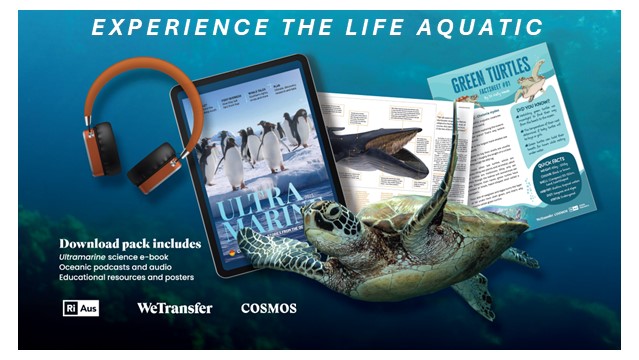The Australian Space industry is a colourful and changing industry. It is continually growing, which will provide a bigger Australian presence in space, as well as new and exciting careers. What is going on in the Space industry?
Learn about the exciting work taking place in Australia’s space sector and what it will look like in the future in this resource for Year 5, 7 and 10 STEM students.
Word Count / Video Length: 500 / 15:52 mins
Aude Vignelles, Chief Technology Officer at Australian Space Agency; Adam Gilmour, CEO of Queensland-based Gilmour Space Technologies; and Cassandra Steer, a lecturer and researcher in space law at the Australian National University, discussed the evolving industry.
The session was hosted by the Royal Institution of Australia’s lead scientist, Professor Alan Duffy.
Key terms
- Perseverence – The rover of NASA’s Mars 2020 mission that landed on the surface of Mars in February 2021 to look for signs of ancient life and collect samples of rock and regolith (broken rock and soil) for possible return to Earth.
- Satellite – A celestial body, natural or artificial, that orbits a planet or moon.
- Space junk – Disused satellites and other man-made debris in orbit around the Earth.
What does Australia’s space industry currently look like?
Australia has been working in space for a long time, and the space industry in Australia is vibrant. The industry has helped the Moon landing and designed technology for Perseverance.
New start up companies are working to put and keep Australian satellites into space, and these are likely to be developed further by private industries.
There are lots of countries in space right now, so work is also being done to promote collaboration between countries, industries, and governments.
Sustainability in space also needs to be considered, so more importance is being placed on making sustainable satellites and cleaning up space junk, as well as designing ethical programs on using and sharing space.
What are the skill requirements of the space sector?
A lot of space projects are very hands on, such as designing, maintaining, and building new products for space.
For this reason, mechanical engineering is a hugely important skill for making satellites, but electrical, chemical, and civil engineers all help get and keep satellites in space. These skills are also supported by technical skills like welding and machining.
Communication is also very important, because there are many people working together to complete a project, and they need to share complex ideas with people from many different backgrounds.
Humanities skills that are used in law and policy are also extremely important because the ethics of space are very complicated. These skills help inform how and when satellites are used, and are important for navigating international relationships.
All of these skilled areas require an understanding of Physics, Mathematics and Earth and Space sciences.
Who do we need in the space sector?
STEM skills need to be supplemented with strong communications skills and help from interactions between STEM and humanities. For example, spaces lawyers need a good understanding of STEM to help make informed decisions, so more intersectional expertise is required.
There also needs to be more women, indigenous peoples, and diversity to help understand space better, without bias.
Looking forward: the next two years
Australia will likely launch more satellites into space to watch things like bushfires and weather, so that the Earth can be monitored closely and specifically. For example, fires in other countries are different from Australia and therefore require different equipment in the satellites to make sure predictions and monitoring are accurate. This could help Australia have a more personalised observation.
University and industry collaboration could provide better space education by making hands-projects, and university and school programs. This might be a way to foster the excitement about space that young Australians have.
Watch the full interview from the Cosmos briefing “Building Australia’s Space Industry” here.
Login or Sign up for FREE to download a copy of the full teacher resource





